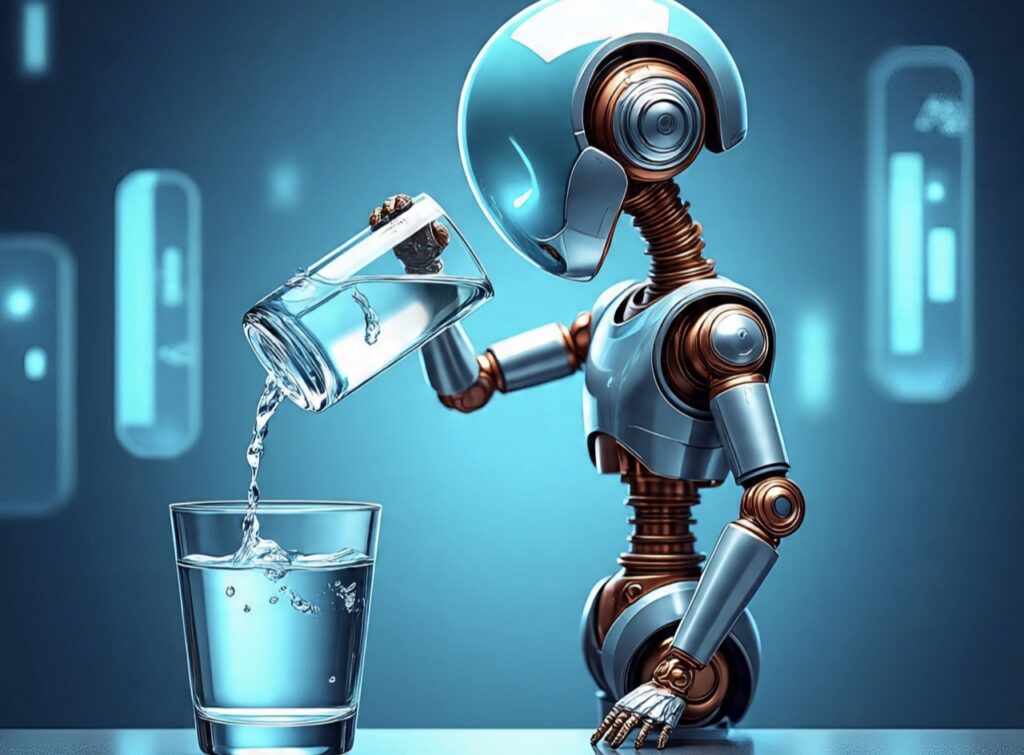
Artificial Intelligence (AI) is transforming our world—from writing emails to generating music, analyzing data, and even predicting the stock market. But behind this digital revolution lies a growing environmental challenge that often goes unnoticed: the enormous consumption of water and electricity by AI and the data centers that power it.
Let’s break down what’s really happening behind the scenes—and why we should all care.
💧 AI’s Extreme Thirst and Energy Hunger
Every time you use AI, you’re not just using data—you’re also using water and electricity.
Water per task Writing a simple 100-word email using ChatGPT consumes nearly 519 milliliters of water—that’s almost half a liter just for one small task!
Water per query: Large AI models like GPT-3 can use around 2 liters of water for every 10–50 questions answered.
Electricity use That same short email takes about 0.14 kilowatts of electricity, and when millions of users are online, that quickly adds up to thousands of megawatts globally.
It’s mind-blowing to think that a virtual conversation can have such a tangible environmental impact.
The Main Culprit: Data Center Cooling
So, where is all this water going? The answer lies in the data centers—massive buildings filled with powerful computers that process AI queries 24/7.
These supercomputers generate intense heat when they work. Without cooling, they would overheat and fail.
To prevent this, data centers use vast amounts of water for cooling, but here’s the catch—nearly 80% of that water evaporates and cannot be reused.
Essentially, every AI request you make contributes to this silent cycle of consumption.
🌍 The Future Impact: A Local and Global Crisis
The situation is especially alarming in countries like India, where the demand for AI and data infrastructure is skyrocketing.
By 2025, data centers in India are expected to use 150 billion liters of water.
By 2030, that figure could jump to a staggering 358 billion liters.
To put it in perspective, cities like Bengaluru—already battling water shortages—are seeing data centers consume nearly 8 million liters daily. This creates serious competition between digital growth and basic human needs like drinking water.
If left unchecked, this could become one of the biggest environmental challenges of the AI era.
🌱 Solutions: Building a Responsible AI Future
Thankfully, the problem isn’t being ignored. Tech giants are stepping up with new initiatives:
Google, Microsoft, and Amazon have pledged to become “water positive” by 2030, meaning they’ll replenish more water than they use.
Researchers are exploring eco-friendly cooling methods, like closed-loop systems that recycle water and seawater cooling to reduce freshwater use.
Some experts suggest relocating data centers to colder regions, where natural temperatures can help with cooling.
But it’s not just up to big companies—we, as users, also play a part.
Think Smart, Use Smart
Every AI query, chatbot prompt, or image generation consumes real-world resources. While AI is a powerful tool for creativity and progress, we need to use it wisely and responsibly.
By understanding its environmental cost and supporting companies that prioritize sustainability, we can ensure that the future of AI is not only smart but also sustainable.
In short:
AI is changing our world, but it’s also quietly consuming massive amounts of water and energy. As we move toward a more AI-driven future, being aware of its hidden costs is the first step toward a more balanced and responsible digital age.
